Manchester attack: What we know so far
- Published
Twenty-two people were killed and 116 injured in a suicide bombing at Manchester Arena.
Here's what we know about the attack so far.
What happened?
Attacker 22-year-old Salman Abedi detonated a home-made bomb in the arena's foyer as crowds were leaving a performance by US singer Ariana Grande just after 22:30 BST on 22 May.
The blast, between the main arena and neighbouring Victoria station, blew people off their feet and caused widespread panic. Witnesses described hearing an explosion and seeing a flash of fire.
Pictures of the aftermath show debris and casualties in the foyer area of the arena. Metal nuts and bolts were strewn around the floor among bodies. The smell of explosives was in the air, witnesses said.
How did people escape?
The bomb was detonated moments after Grande had performed her final song and fans had started making their way home.
People began scrambling for the arena's exits and were seen fleeing down the stairs from the foyer into the station.
People who had arrived to drive friends and relatives home were forced to go on a desperate hunt to find missing children.
More than 240 emergency calls were made; 60 ambulances and 400 police officers attended.
What happened in the foyer?
The foyer where the bomb went off is the busiest exit from the arena - housing the box office and leading to the car park and Victoria Station.
Photos from the scene have been leaked to the US media., external
According to the New York Times,, external analysis of images of the scene reveal how the bomb's shrapnel penetrated metal doors and left marks on brickwork.
The paper said the authorities' review of the blast site shows the bodies of those killed were located in a circle around where the device was detonated - just outside the arena's main exit.
The photos also appear to show bloodstained fragments from the bomb and the backpack used by the attacker.
The images show the remains of a Karrimor backpack, a possible detonator, a 12-volt battery as well as metal nuts and screws.
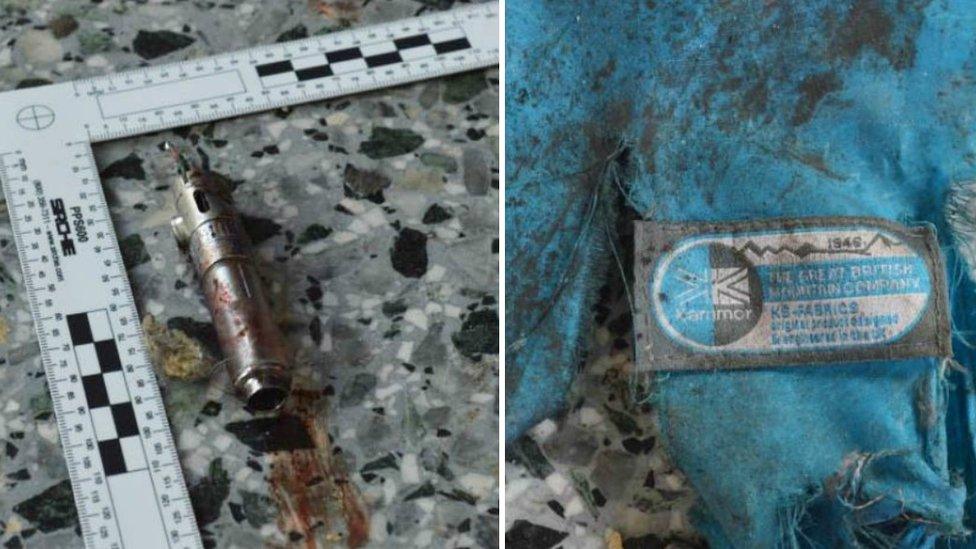
A possible detonator, and backpack remains, found at the scene


Salman Abedi, was named by police as the suicide bomber shortly after the attack.
Abedi was one of three siblings and was born in Manchester on New Year's Eve 1994.
The family, of Libyan origin, lived at several addresses in Manchester, including properties which were raided by police.
Powerful stories from people who were at Manchester Arena
Abedi attended Burnage Academy for Boys in Manchester between 2009 and 2011, before going to The Manchester College until 2013 and then Salford University in 2014.
BBC News was told the public called an anti-terrorism hotline after he expressed the views that "he was supporting terrorism" and "being a suicide bomber was ok", but Greater Manchester Police said it has not found any records of these calls taking place.
Abedi was arrested for minor offences in 2012 but was not known to the government's Prevent scheme.
It was later revealed that MI5 is to hold an inquiry into the way it dealt with warnings from the public that Abedi had expressed extremist views and was a potential threat.
Abedi left the UK on 15 April and travelled to Libya before returning back into the UK on the 18 May, the police investigation has found.
The so-called Islamic State group has claimed responsibility, but this has not been verified.

Victims named
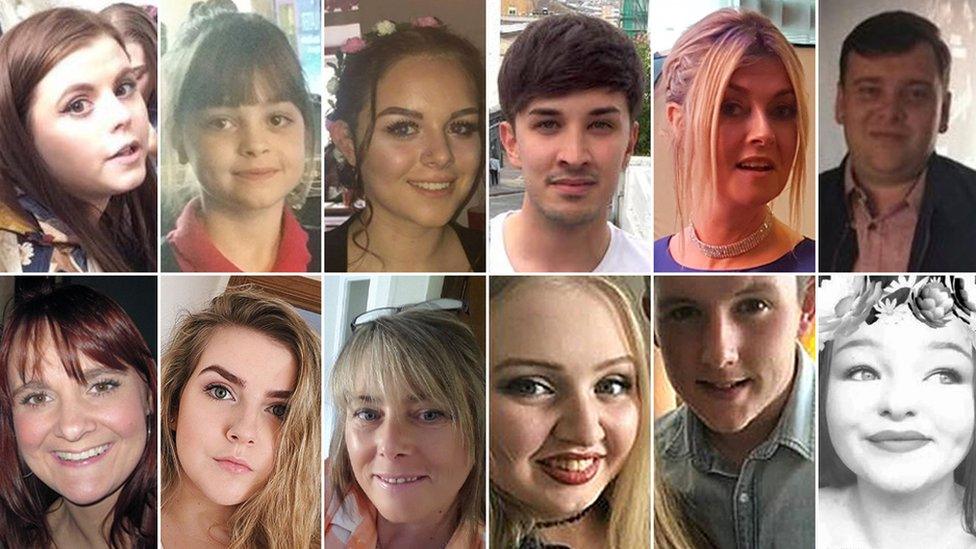
Clockwise, from top left: Courtney Boyle, Saffie Roussos, Olivia Campbell, Martyn Hett, Michelle Kiss, Philip Tron, Sorrell Leczkowski, Liam Curry, Chloe Rutherford, Wendy Fawell, Eilidh MacLeod, Elaine McIver
All 22 victims have been named. The youngest victim to be named is eight-year-old Saffie Roussos, from Leyland, Lancashire.
Elaine McIver, an off-duty officer from Cheshire Police, was also among those killed. She was with her partner, Paul, and two children, all of whom were injured.
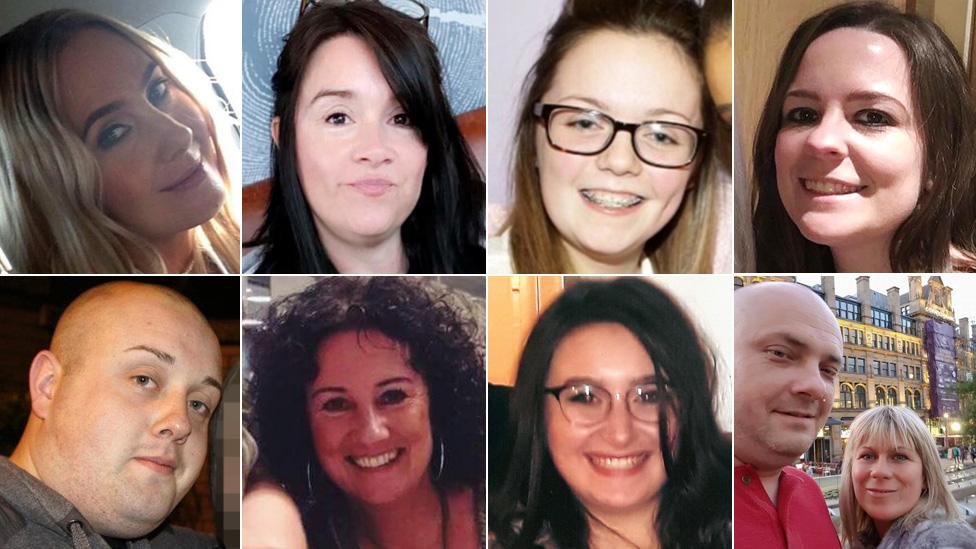
Clockwise from top left: Lisa Lees, Alison Howe, Georgina Callander, Kelly Brewster, Angelika and Marcin Klis, Nell Jones, Jane Tweddle-Taylor, John Atkinson
In total, 116 people were admitted to hospital in relation to the attack, NHS England said.
Sixty three people are still being treated in eight hospitals, including 23 patients who are in critical care.

The investigation
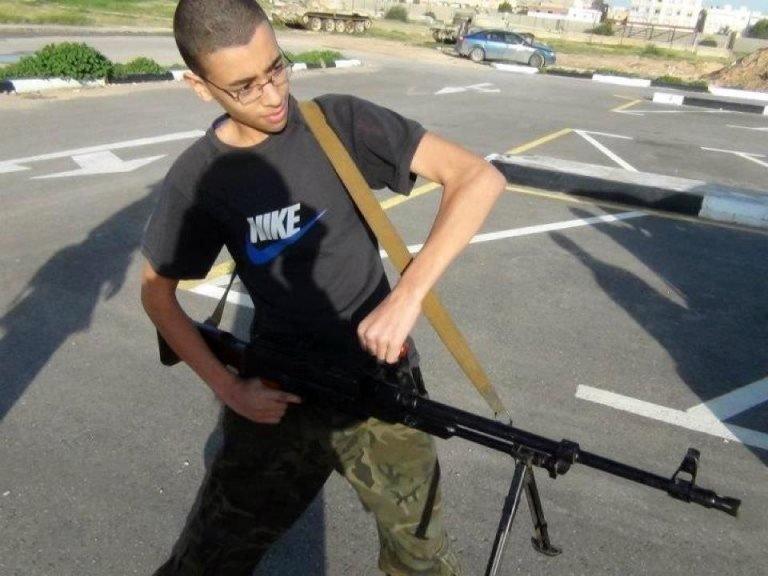
Twenty-year-old Hashem Abedi, Abedi's younger brother, was arrested in Tripoli
Twenty-two people have been arrested in the UK in connection with the attack, all of whom have now been released without charge.
Those arrested included Abedi's older brother, Ismail, 24, who was detained in Whalley Range the day after the bombing.
Abedi's younger brother Hasham, 20, was detained in Tripoli on suspicion of links with the so-called Islamic State group the day after the attack.
Reuters news agency told the BBC that Abedi's father, Ramadan, had also been detained in Libya.
The bomber's two cousins, Isaac and Abz Forjani, were both arrested the day after the attack and questioned by police for seven days.
The pair said Abedi had never admitted extremist views, and thought he may have been radicalised abroad.
Salman Abedi's cousins say the bomber "betrayed his family"
On 23 May, police raided a flat in Granby Row, Manchester, that Abedi may have used before the attack on Monday night.
Twenty-nine house searches have been conducted by police.

Police raided a flat in Granby Row, Manchester
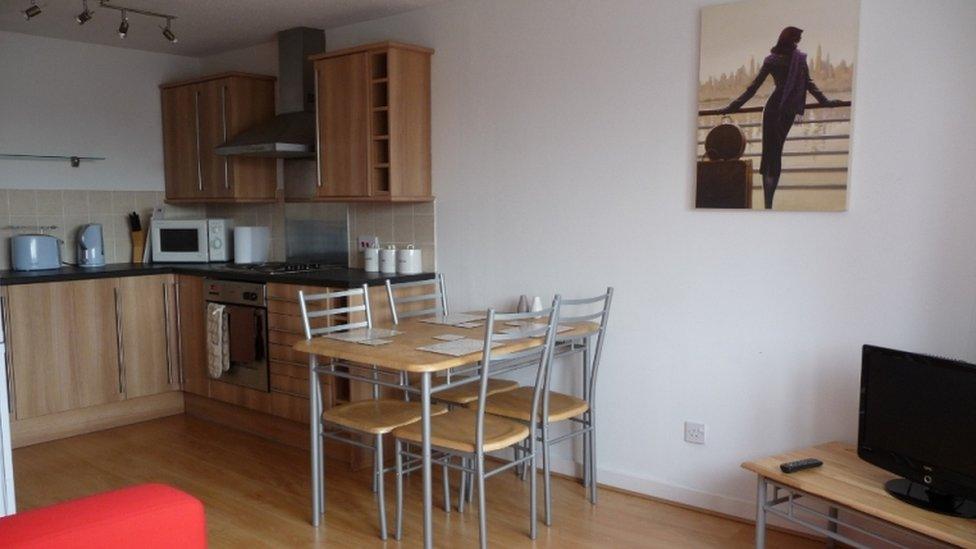
Abedi may have used the flat before the attack
Officers have examined Abedi's movements on CCTV and other interactions he had with people as well as phone calls he made.
Police have yet to rule out whether he was part of a wider network, although it is thought most likely that Abedi assembled the bomb himself.
It is less clear whether he acted alone in buying the components needed to make the device.
Police believe Abedi wanted to carry out the attack within days of returning to the UK after a month-long trip to Libya.
CCTV has shown him purchasing more items for the bomb soon after he arrived back, including buying nuts from a DIY store that were used for shrapnel as well, said Russ Jackson, head of the North West counter terrorism unit.
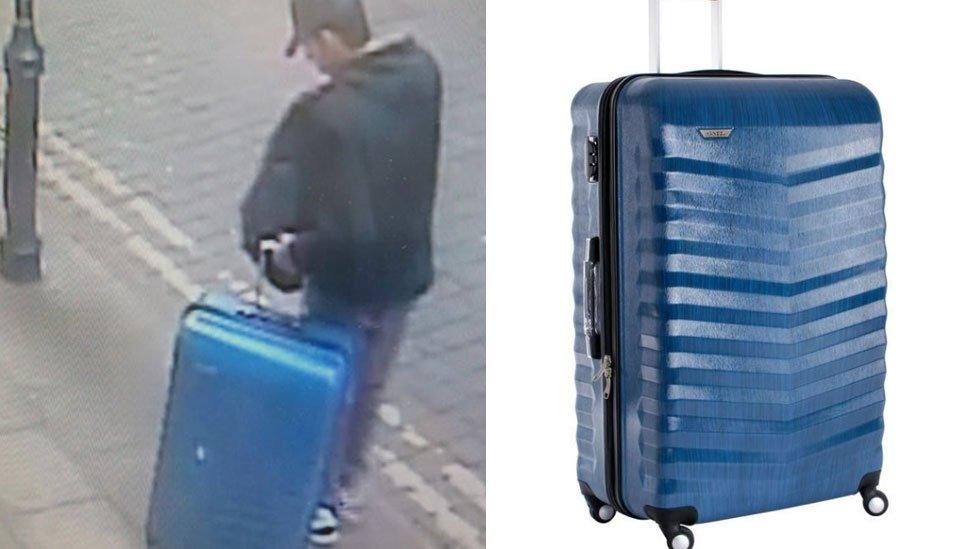
Police are keen to find the blue suitcase Abedi was spotted with on CCTV
Abedi was also tracked going to and from the Banff Road area of Rusholme, where a white Nissan Micra was found.
The Micra - which was bought on 13 April - contained materials for bomb making and Abedi is forensically linked to the car, say police.
Detectives believe items were stored in it for a short period of time, either material to make a bomb or a pre-made charge. The actual assembly of all the parts appears to have been in the days immediately before the attack.
Police have appealed to the public for information relating to the car's movements on 14 April. They also released images of plastic barrels stored in the Nissan.
Meanwhile a search is ongoing at a landfill site for a blue suitcase thought to contain items Abedi discarded after having assembled the device.
Hashem Abedi left the UK at the same time as Salman on 15 April. He is currently detained in Libya, but British police have said they wish to interview him in relation to the attack.


On 2 June police released more CCTV footage of Abedi before the attack
Shortly after the bombing, police investigating the attack temporarily stopped sharing information with the US after leaks to the media.
UK officials were outraged when photos appearing to show debris from the attack appeared in the New York Times.
Ramadan Abedi, the father of the Manchester suicide bomber, spoke to Reuters two days after the attack
Anyone with information can call the anti-terror hotline on 0800 789321.
The police have also appealed to anyone with images or footage from the attack to upload it to ukpoliceimageappeal.co.uk, external or ukpoliceimageappeal.com, external

Extra security
After the attack, the UK terrorism threat level was raised from "severe" to "critical" for the first time since 2007.
The change indicated an attack was imminently expected.
Members of the armed forces replaced armed police at certain "key sites".
Home Secretary Amber Rudd said 984 servicemen and women were deployed as part of Operation Temperer - the government plan to put soldiers on the streets.
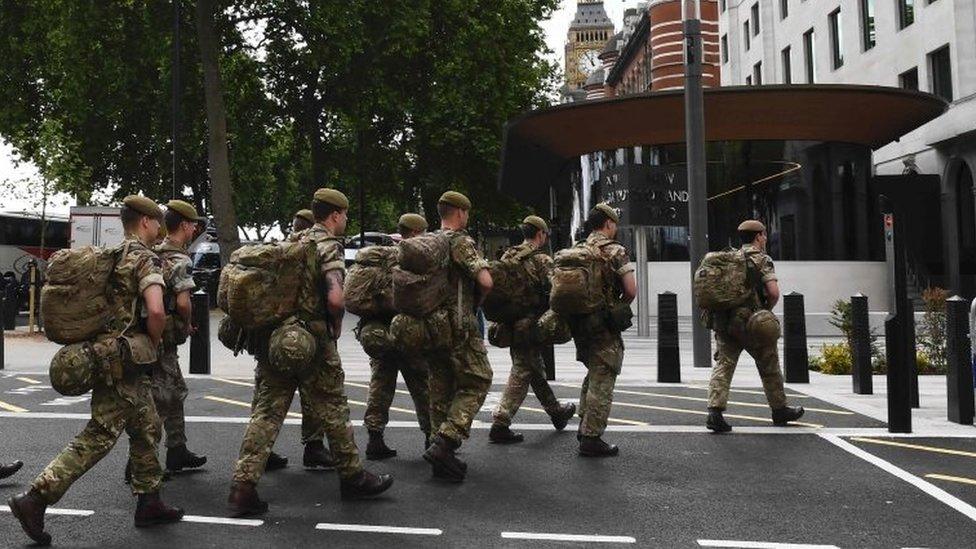
Home Secretary Amber Rudd says 984 servicemen and women have been deployed
This freed up extra armed police officers for deployment at sporting events over the bank holiday weekend, including the FA Cup final.
Sporting events and venues in England also conducted major security reviews. Chelsea FC cancelled their Premier League victory parade.
Police Scotland said it was reviewing all "significant events" taking place within the next 14 days and increased the number of armed police on patrol.
The threat level was reduced to severe after a meeting of the government's emergency committee Cobra on 27 May.

